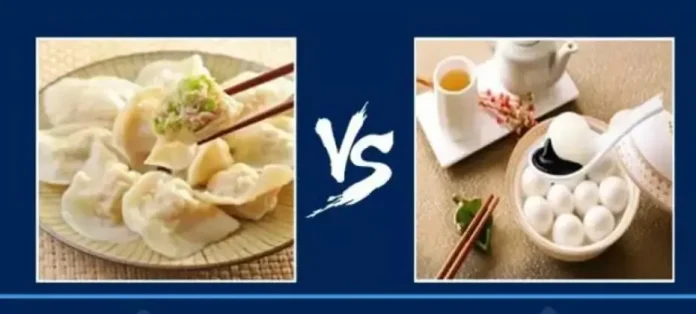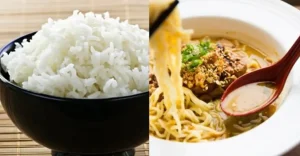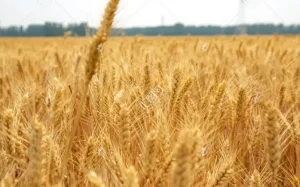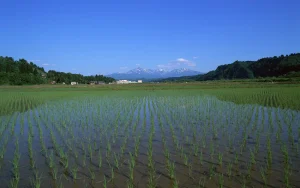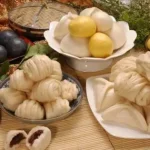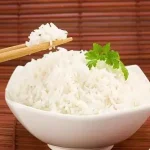There is a saying in China called ‘Make One’s Living on the Actual Condition‘. The meaning is that people will use whatever living materials the local area can provide for them. For example, people by the sea can make a living by fishing, while the sea can provide fish for people, so people eat more fish; The grassland is capable of raising cattle and sheep, and people around there make a living by grazing cattle and sheep, thus their diet is mainly meat and milk. The differences between diets of people in the south and the north of China are due to the influence of a series of factors through a very long period.
The most significant influence comes from climate and geography. In the northern region, rivers and lakes freeze in winter, and most areas have less annual precipitation, mostly between 400 and 500 millimeters, while evaporation is mostly over 1000 millimeters. The weather in the north is cold, dry, and seldom rainy, making it suitable for growing wheat, millet, corn, and sorghum. So for a long time, northerners like to eat cooked wheaten food. They are used to eating noodles, dumplings, Mantou and other cooked wheaten food.
In addition, precipitation is mostly concentrated in summer, and only summer forms the flood season, which is relatively short. The sediment content of rivers is high, which is not conducive to the survival of rice. In winter, the weather is freezing, and in many places, nothing can be planted. Therefore, the cultivated land in the north is mostly dry land, with the main crops being wheat and miscellaneous grains. In the winter or early spring of each year, select wheat with strong drought resistance, and the yield is also high, reaching about a thousand kilograms per mu.
The southern climate is warm and suitable for growing rice. Combined with abundant rainfall, it is most suitable for rice growth. The south is relatively hot with distinct seasons. This climate makes eating rice simple and fast, and it won’t make the hot weather even more noisy. In the southern region, it does not freeze in winter and is evergreen throughout the year. Moreover, the rainfall is abundant, with an annual rainfall of generally over 1000 millimeters. The water volume of rivers is large, and the flood season is long. The sediment content of the river is low, which is not conducive to the growth of wheat.
Therefore, in the south, there are mainly paddy fields, with crops such as rice and tea, which are harvested twice or three times a year. The common saying ‘North Wheat, and South Rice; South ship, and North horse‘ is a true portrayal of this difference. In fact, in the southern region of China, wheat was also planted before, but the yield of winter wheat per mu was generally around 300 to 400 kilograms, accounting for only one-third of the rice yield in the grain harvest of farmers. Moreover, wheat cannot withstand rainy weather in the later stage, and the scab is very serious (there is no effective control method yet), so that wheat is almost no longer planted in these areas of the south. Therefore, many people believe that wheat cannot be grown in the south.
It is precisely because of this favorable climate conditions that planting habits have been formed, as well as the dietary habits of the South. In ancient times, transportation was extremely underdeveloped, such as rice in the south, wheat and corn in Guanzhong, soybean and rice in the northeast, and potatoes in Gansu. As a result, it was difficult for the general public to eat food outside the production area, so there was a story of “At a horse raising red dust the imperial concubine smiled,
No one knew it was for the litchi fruit it had brought.“
Also there are other factors contributing to this phenomenon. Northern Chinese cuisine has been influenced by nomadic tribes from Inner Asia who ate more wheat and mutton. Southern cuisine has been influenced by groups from south and southeast Asia who ate more rice, fish and spices. The diverse ethnic groups in China contribute to differences in culinary culture. And as China’s economy and transportation infrastructure developed, crop production and food choices have become less geographically confined. However, regional preferences that developed over long periods of time are slow to change. Noodles and rice have become ingrained in the culture and identity of northern and southern Chinese cuisines respectively. Cultural exchange between north and south has also spread culinary traditions in China. For example, Jiangsu and Shandong cuisines incorporate both rice and wheat. However, on the whole, the south still consumes more rice while the north eats more noodles. Regional specialties made from rice or wheat remain prized locally.
In terms of nutritional value, both are carbohydrates. From the perspectives of protein, vitamins, minerals, and energy, rice and noodles have their own strengths and weaknesses, making it difficult to distinguish between high and low. The problem is that you need to pay attention to the reasonable combination with other nutrients.
Thus why do you like a certain type of staple food? This is mainly due to psychological recognition and acceptance, because when a staple food gradually forms and stabilizes, it brings a sense of psychological security and satisfaction. If you often eat rice, when you come to a noodles area, you will miss the rice especially and feel mentally weak. It seems like there’s no support left, wanting rice to reappear on the dining table. People will mainly eat whatever is mainly grown in their region. The difference between diets of the South and North in China is developed through weather, history and so many factors, which also contributes to the various and colorful cultural characteristics and of China, adding so much meaning to the open and pluralistic Chinese society.



